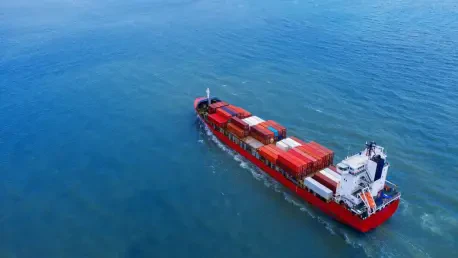Introduction to Abu Dhabi’s Maritime Sector
In the heart of the Arabian Gulf, Abu Dhabi stands as a pivotal hub for maritime activity, where the azure waters are not just a scenic backdrop but a vital artery for economic growth and strategic influence, underpinning a significant portion of its GDP. The emirate’s maritime sector facilitates trade, tourism, and energy exports while serving as a gateway to global markets. This dynamic industry faces an ever-growing demand for robust safety measures to protect its bustling ports and leisure waterways from potential hazards.
The scope of maritime activities in Abu Dhabi spans a wide spectrum, from commercial shipping that powers international trade to leisure boating that attracts tourists and residents alike. Infrastructure development, including state-of-the-art ports and coastal facilities, further amplifies the sector’s importance. Key players such as the Integrated Transport Centre (ITC), Abu Dhabi Maritime, and AD Ports Group collaborate with government entities to steer this industry toward excellence, ensuring seamless operations across diverse domains.
Despite its achievements, the current regulatory framework has faced challenges in keeping pace with rapid growth and emerging risks. Existing guidelines often lack uniformity, creating gaps in safety and sustainability practices. This underscores the urgent need for updated rules that can address modern demands, safeguard lives, and preserve the marine environment for future generations.
Overview of the New Maritime Regulations
Key Features of the Codes of Practice (CoPs)
The Abu Dhabi Quality and Conformity Council (QCC) has rolled out five transformative Codes of Practice (CoPs) to standardize maritime operations and elevate safety across the emirate. These guidelines cover a comprehensive range of activities and infrastructure, ensuring that every facet of the industry adheres to stringent benchmarks. Crafted to align with international best practices, they also cater to local conditions, offering tailored solutions for unique challenges.
The first guideline focuses on safe maritime activities, setting protocols for leisure boating, diving, and ship management, while the second establishes safety and licensing standards for public water transport to protect passengers. Other codes address the design and construction of small marine crafts under 24 meters, the engineering of maritime infrastructure like jetties and seawalls, and the safe operation of both recreational and commercial vessels through detailed checklists. Together, these form a robust framework to minimize risks and enhance reliability.
Collaborative Development and Stakeholder Involvement
Behind these regulations lies a remarkable collaborative effort involving 25 government entities, including Abu Dhabi Police, Civil Defense, and the Environment Agency. This partnership reflects a unified commitment to creating a safer and more sustainable maritime landscape. By pooling expertise and resources, these stakeholders have developed guidelines that balance operational needs with environmental stewardship.
Key figures have voiced strong support for this initiative, with Eng. Bader Khamis Al Shemeli emphasizing the role of teamwork in crafting a clear roadmap for risk mitigation. Dr. Abdulla Hamad Al Ghfeli from ITC highlighted the strategic importance of elevating service quality, while Capt. Saif Al Mheiri of Abu Dhabi Maritime underscored the guidelines’ focus on fostering a cohesive regulatory environment. Their collective vision prioritizes safety and operational excellence as cornerstones of progress.
This shared dedication ensures that the new rules are not just mandates but a reflection of a broader goal to position Abu Dhabi as a model of maritime innovation. The involvement of diverse entities guarantees that the guidelines are practical, enforceable, and geared toward long-term benefits for all involved parties.
Challenges in the Maritime Sector Addressed by New Rules
Abu Dhabi’s maritime industry grapples with several operational and safety challenges that threaten its efficiency and reputation. Inconsistencies in standards across different activities, such as leisure boating and commercial shipping, often lead to confusion and heightened risks. Incidents stemming from inadequate oversight or outdated practices have exposed vulnerabilities that demand immediate attention.
Environmental concerns also loom large, as unchecked development and vessel operations can harm the delicate marine ecosystem. Sustainable infrastructure practices are essential to prevent erosion and pollution along the emirate’s coastline. The absence of unified regulations has historically complicated efforts to balance growth with conservation, creating a pressing need for clarity and structure.
The newly introduced guidelines tackle these issues head-on by establishing uniform standards, safety protocols, and engineering benchmarks. By streamlining rules and introducing practical tools like checklists, the regulations aim to reduce accidents, ensure accountability, and promote eco-friendly practices in construction and operations, paving the way for a more resilient industry.
Impact of Regulatory Changes on Safety and Compliance
The new maritime guidelines promise to significantly bolster safety across a wide array of activities, from casual boating to complex public transport systems. By setting clear expectations for operators and developers, these rules minimize the likelihood of accidents and ensure that safety remains a top priority in every project. This comprehensive approach covers both human and environmental well-being.
Compliance plays a critical role in this transformation, holding operators accountable through mandatory licensing and certification processes. Technical supervision further reinforces adherence to standards, while protecting the marine environment becomes an integral part of operational mandates. Such measures create a culture of responsibility that benefits stakeholders at all levels.
Additionally, the structured enforcement mechanisms embedded in these regulations help build trust among users and investors. With safety standards now aligned across diverse maritime domains, the risk of oversight failures diminishes, fostering a secure environment where innovation can thrive without compromising on essential protections.
Future Prospects for Abu Dhabi’s Maritime Industry
With these regulations in place, Abu Dhabi is well-positioned to emerge as a regional and global leader in maritime services and infrastructure. The unified framework not only addresses current gaps but also sets a foundation for adopting cutting-edge technologies and practices. This forward-thinking approach could attract international partnerships and investments over the coming years.
Potential innovations, such as smart port systems and eco-friendly vessel designs, stand to gain traction under the supportive regulatory environment. The emphasis on sustainability may drive advancements in green technologies, reducing the sector’s carbon footprint. From 2025 to 2027, the industry could see accelerated integration of digital tools for monitoring and compliance.
Long-term, the economic benefits of a reliable and safe maritime sector are substantial, enhancing trust among global traders and tourists. Environmental gains, through protected coastlines and reduced pollution, align with broader sustainability goals, ensuring that growth does not come at the expense of natural resources, but rather in harmony with them.
Conclusion: A Safer and Sustainable Maritime Future
Looking back, the introduction of Abu Dhabi’s new maritime rules marked a turning point for the emirate’s industry, embedding safety, quality, and sustainability into its core. The collaborative spirit that shaped these guidelines stood as a testament to the power of unified action, aligning local efforts with international benchmarks. This initiative tackled pressing challenges with precision and foresight.
Moving forward, stakeholders must prioritize consistent implementation and regular updates to adapt to evolving needs. Investing in training programs for operators and leveraging technology for real-time monitoring could amplify the impact of these regulations. Such steps would ensure that safety remains a dynamic commitment rather than a static goal.
Ultimately, the path ahead calls for sustained dedication to innovation and environmental care, encouraging global collaboration to refine and expand these frameworks. Abu Dhabi’s maritime sector, fortified by these changes, holds the promise of not just meeting but exceeding expectations, setting a benchmark for others to follow in building a resilient and responsible industry.









